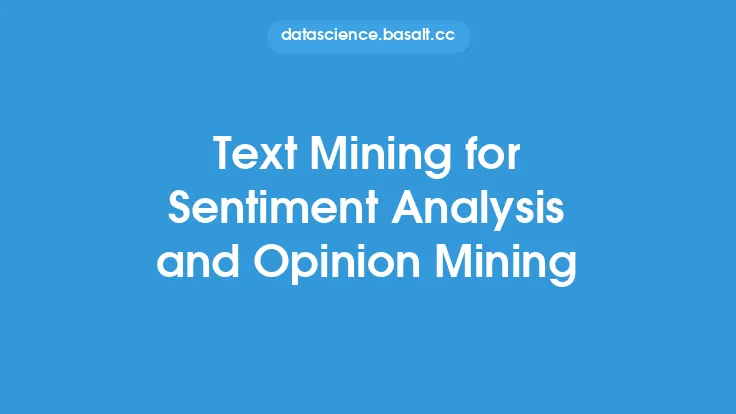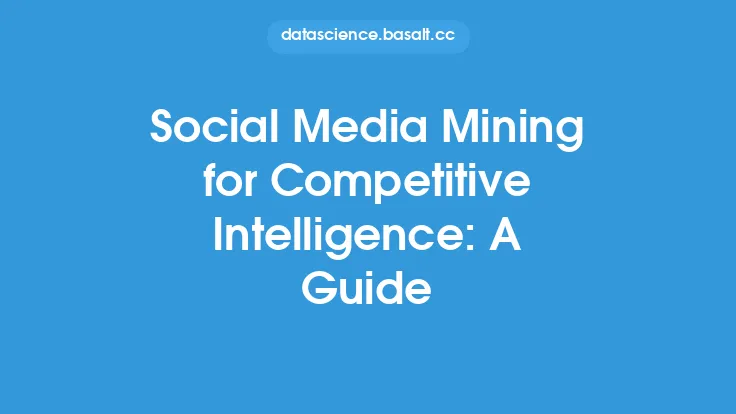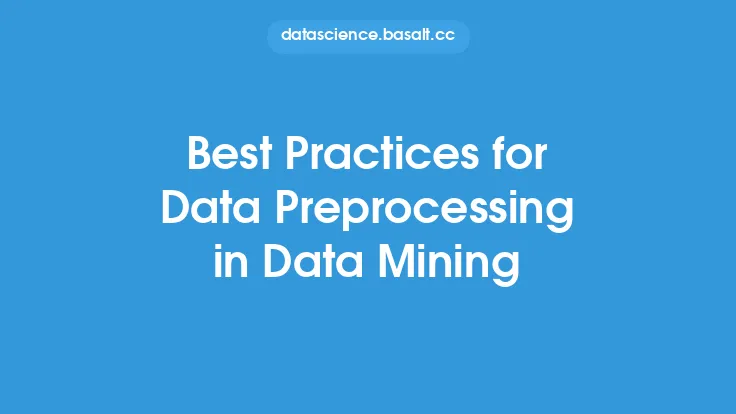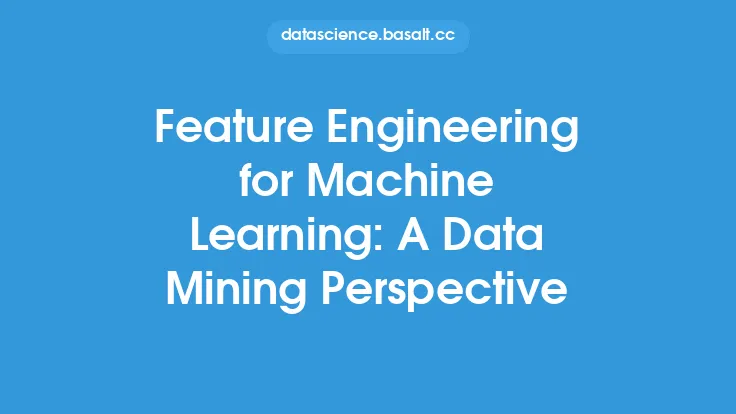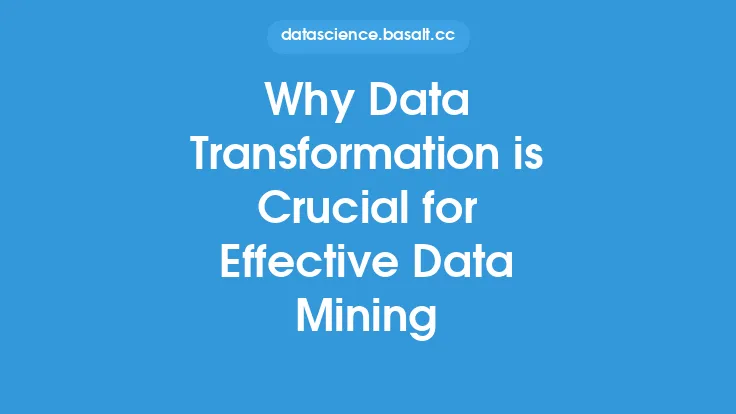Text preprocessing is a crucial step in the text mining process, as it enables the transformation of raw text data into a format that can be analyzed and mined for insights. The goal of text preprocessing is to remove noise, reduce dimensionality, and extract relevant features from the text data, making it possible to apply various text mining techniques. In this article, we will delve into the various text preprocessing techniques that are essential for effective text mining.
Introduction to Text Preprocessing
Text preprocessing involves a series of steps that are applied to the text data to prepare it for analysis. The preprocessing steps can be broadly categorized into two types: data cleaning and data transformation. Data cleaning involves removing noise and irrelevant data from the text, while data transformation involves converting the text data into a format that can be analyzed. The preprocessing steps are critical, as they can significantly impact the accuracy and effectiveness of the text mining process.
Tokenization
Tokenization is the process of breaking down text into individual words or tokens. This is a fundamental step in text preprocessing, as it enables the analysis of text at the word level. Tokenization can be performed using various techniques, including rule-based approaches, dictionary-based approaches, and machine learning-based approaches. Rule-based approaches use a set of predefined rules to split the text into tokens, while dictionary-based approaches use a dictionary to identify the words in the text. Machine learning-based approaches use algorithms such as conditional random fields and support vector machines to learn the tokenization rules from labeled data.
Stopword Removal
Stopwords are common words that do not carry much meaning in a sentence, such as "the," "and," and "a." These words can be removed from the text data, as they do not add much value to the analysis. Stopword removal is an essential step in text preprocessing, as it helps to reduce the dimensionality of the text data and improve the accuracy of the analysis. Stopword removal can be performed using a predefined list of stopwords or by using a machine learning algorithm to learn the stopwords from the data.
Stemming and Lemmatization
Stemming and lemmatization are techniques used to reduce words to their base form. Stemming involves removing the suffixes from words, while lemmatization involves removing the suffixes and prefixes from words. For example, the words "running," "runs," and "runner" can be reduced to their base form "run" using stemming or lemmatization. These techniques are essential in text preprocessing, as they help to reduce the dimensionality of the text data and improve the accuracy of the analysis.
Removing Special Characters and Punctuation
Special characters and punctuation can be removed from the text data, as they do not add much value to the analysis. This step is essential in text preprocessing, as it helps to reduce the noise in the data and improve the accuracy of the analysis. Special characters and punctuation can be removed using a rule-based approach or by using a machine learning algorithm to learn the removal rules from the data.
Handling Out-of-Vocabulary Words
Out-of-vocabulary words are words that are not present in the training data or the dictionary. These words can be handled using various techniques, including subword modeling and character-level modeling. Subword modeling involves breaking down the out-of-vocabulary words into subwords, while character-level modeling involves modeling the words at the character level. These techniques are essential in text preprocessing, as they help to handle the out-of-vocabulary words and improve the accuracy of the analysis.
Text Normalization
Text normalization involves converting the text data into a standard format. This can be done by converting all the text to lowercase, removing accents and diacritics, and replacing special characters with their equivalent ASCII characters. Text normalization is an essential step in text preprocessing, as it helps to reduce the noise in the data and improve the accuracy of the analysis.
Feature Extraction
Feature extraction involves extracting relevant features from the text data. This can be done using various techniques, including bag-of-words, term frequency-inverse document frequency, and word embeddings. Bag-of-words involves representing the text data as a bag of words, while term frequency-inverse document frequency involves representing the text data as a weighted bag of words. Word embeddings involve representing the words as vectors in a high-dimensional space. These techniques are essential in text preprocessing, as they help to extract relevant features from the text data and improve the accuracy of the analysis.
Conclusion
Text preprocessing is a critical step in the text mining process, as it enables the transformation of raw text data into a format that can be analyzed and mined for insights. The various text preprocessing techniques, including tokenization, stopword removal, stemming and lemmatization, removing special characters and punctuation, handling out-of-vocabulary words, text normalization, and feature extraction, are essential for effective text mining. By applying these techniques, data scientists and analysts can improve the accuracy and effectiveness of the text mining process and uncover hidden patterns and insights from the text data.
